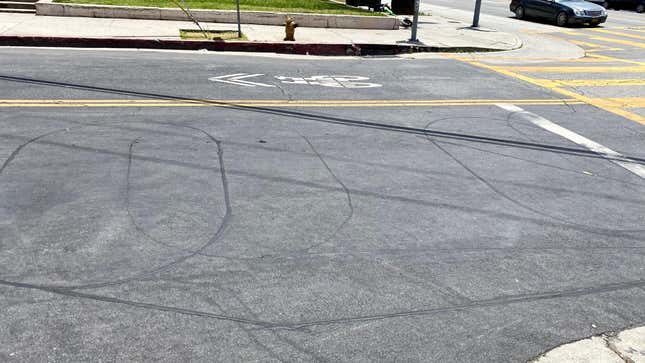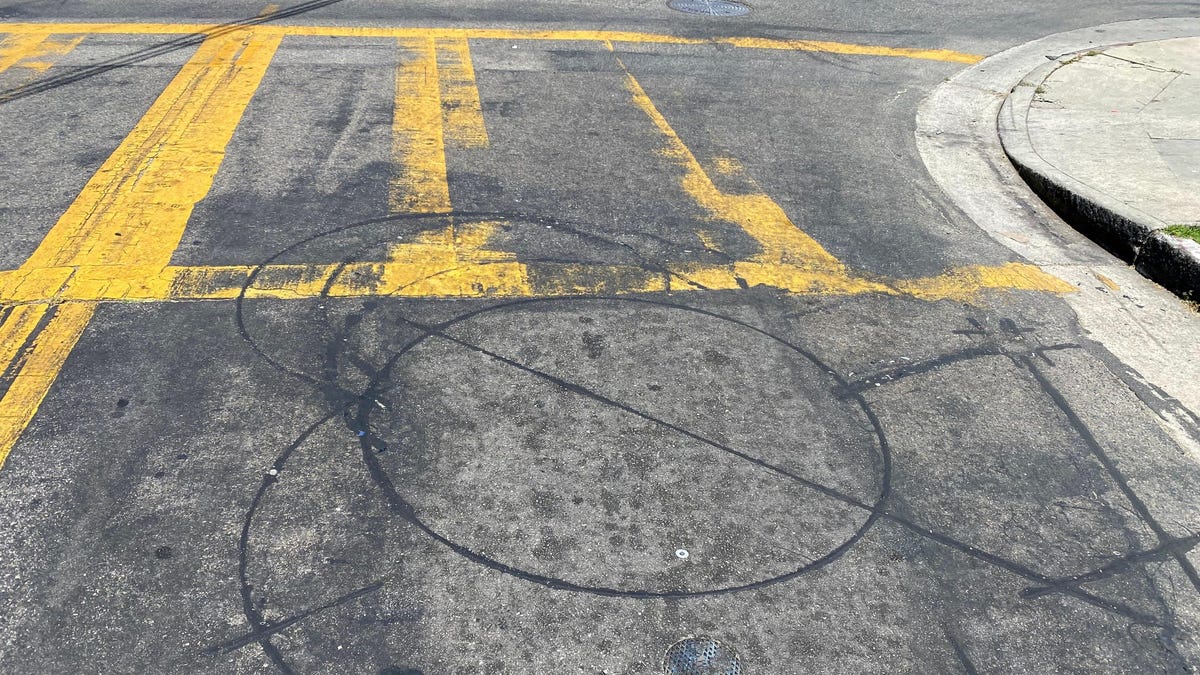We’ve all spewed expletives at stop lights that take too long, but it could have been your fault — maybe you didn’t pull forward far enough, or you pulled too far forward to let the light know there is a car waiting. Traffic lights are timed using a few different methods, with many using inductive loop systems embedded in the road in order to function properly. Induction loops are basically magnetic sensors that detect the presence of metallic objects above the surface of the road, and you can usually tell if a traffic light uses these sensors if you see dark lines forming circles or rectangles near intersections.
Inductive loop systems are installed when workers cut a groove into the asphalt with a saw and place a wire into the groove, which is sealed in place with a black rubber compound, which is usually easily visible to drivers. There’s an electrical current running through the underground wire, and when metal or a car passes over the wire it changes the inductance, which lets the lights know that a car is waiting. Busier intersections often have multiple sets of inductive loops set at different distances from the signals to let the lights know how long of a line of cars is waiting to pass the light. According to How Stuff Works,
Inductive loop systems are commonly used thanks to their simplistic nature. There’s much less chance of a breakdown compared to expensive and complex digital sensors, but this simplicity can also be a drawback. All the induction coil “knows” is whether or not a car is currently parked on top of it. This is the main reason that the light may fail to change in a timely manner if a car doesn’t pull all the way up to a stop.
Lighter vehicles like motorcycles may also fail to trigger the inductor with their weight alone, making them a hassle for bikers during low-traffic hours. Digital sensor systems do away with these problems, and they allow transportation authorities to log countless hours of traffic data that can be used for future planning of routes and city projects.
If the first car at a traffic light doesn’t pull their vehicle over the inductive loop that’s embedded in the ground, the light might not know that there are cars waiting to cross and take longer to turn green or just keep staying red. This problem also arises if the lead car pulls too far forward into the crosswalk, since they have passed the inductive loop and the light doesn’t know there’s a car waiting to cross. If you see these little tell-tale black lines in the road forming circles or rectangles inside the lane, make sure to pull your vehicle directly over them when possible.

If you’re riding a motorcycle or bicycle and you’re stuck at a red light that won’t change, you should also try to find the inductive loop markings on the ground. As they are designed to react to the presence of metal over the wire, Revzilla recommends placing your wheels directly above the lines in the pavement to expose them to as much of the metal parts of your bike as possible to trigger the sensor. If you’re in a car stopped behind a motorcycle at a stop light and the motorcyclist waves you ahead, pull forward so your vehicle can trip the induction loop and help the light change faster.
Next time you’re cursing a stop light for taking too long, make sure that you’re doing what you can to trip the induction loop. Pull all the way forward, don’t block the crosswalk, and wait for the light to do its job to keep your drive as safe and smooth as possible.

